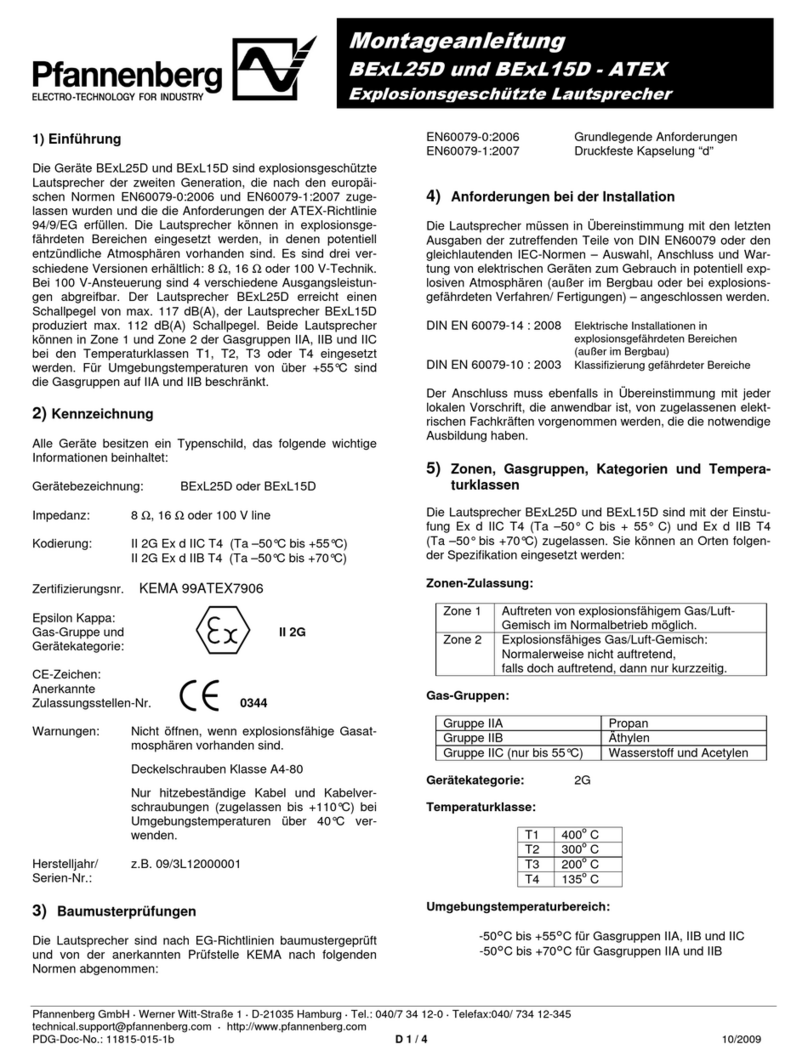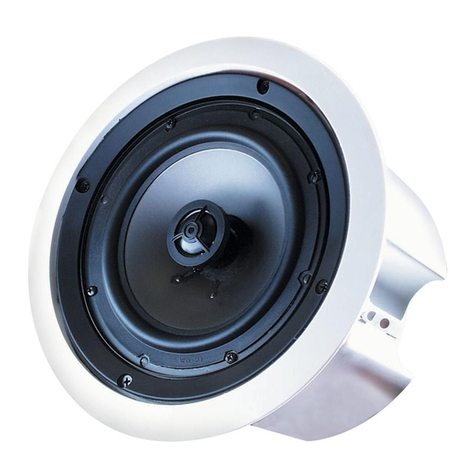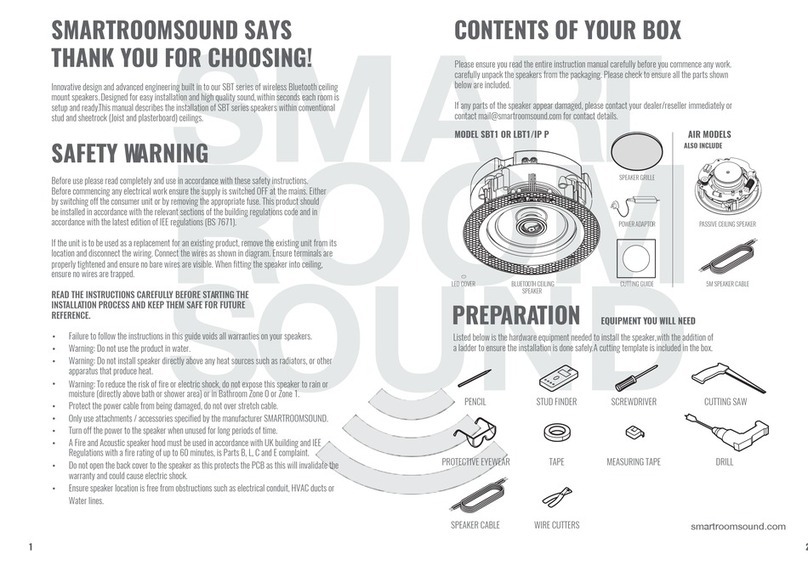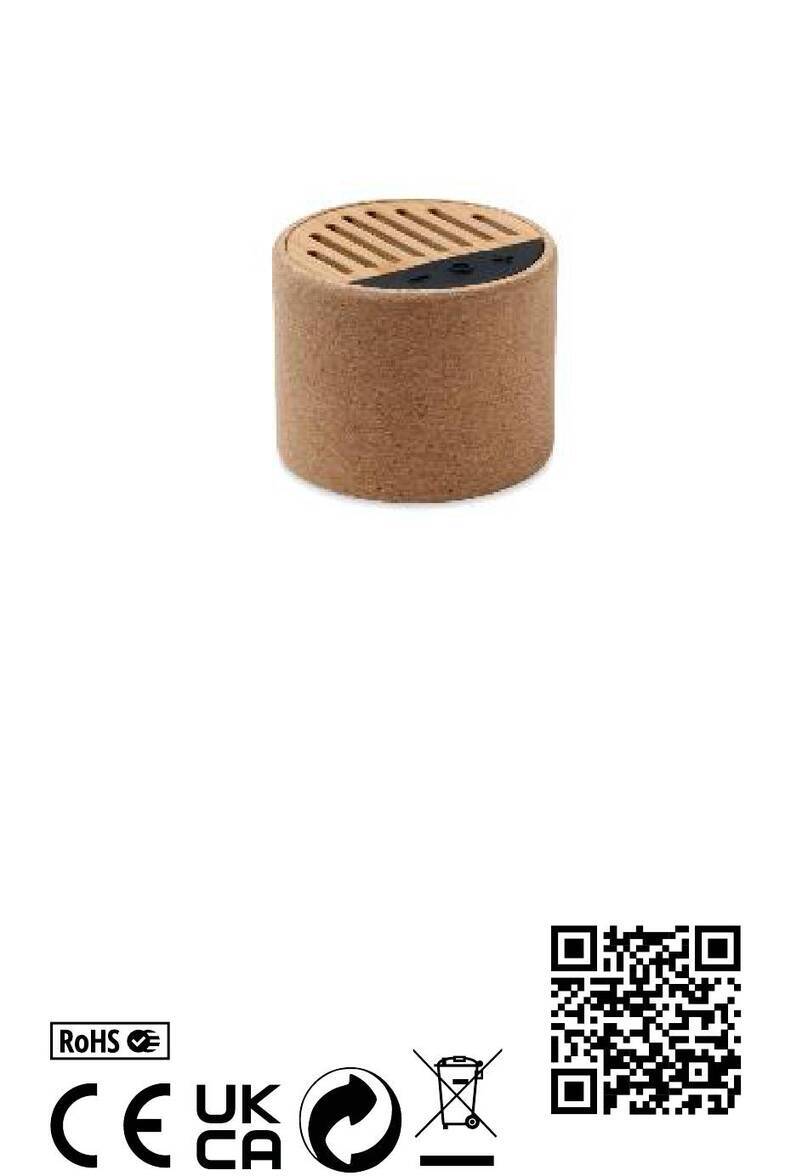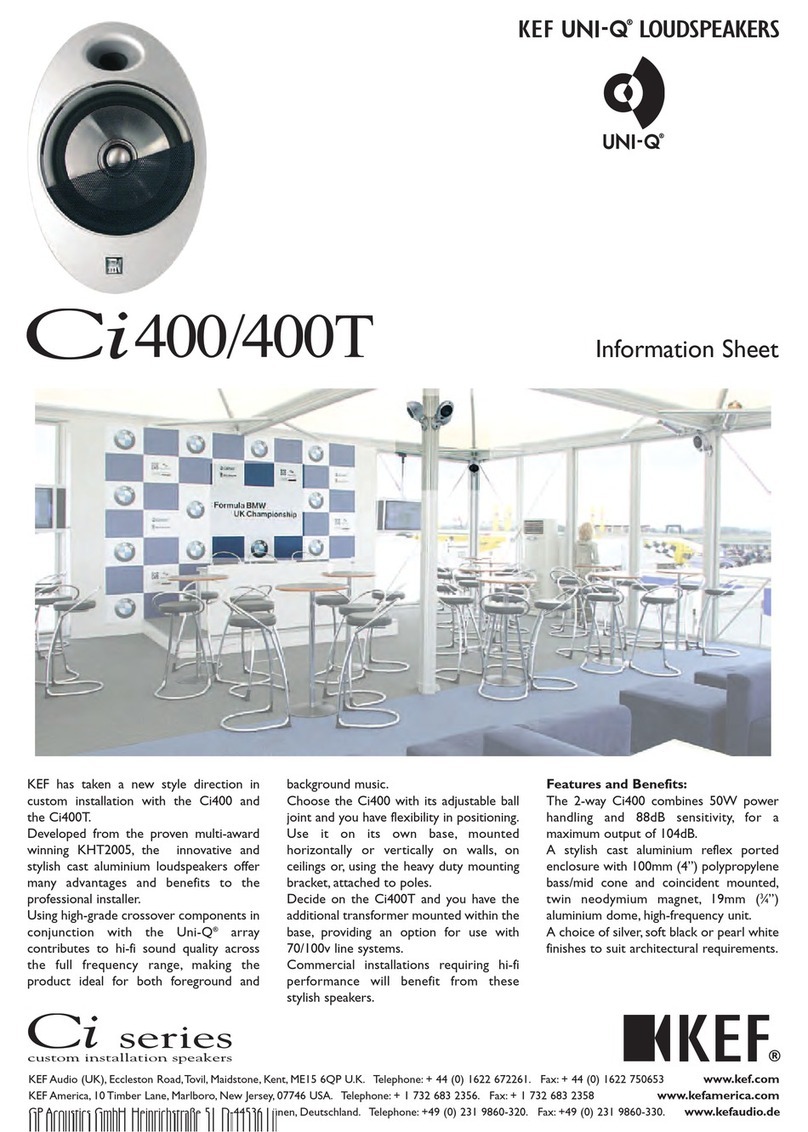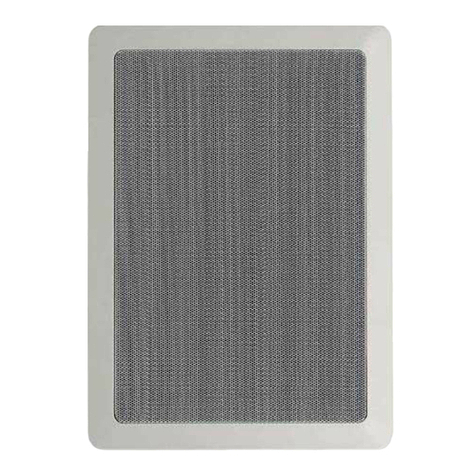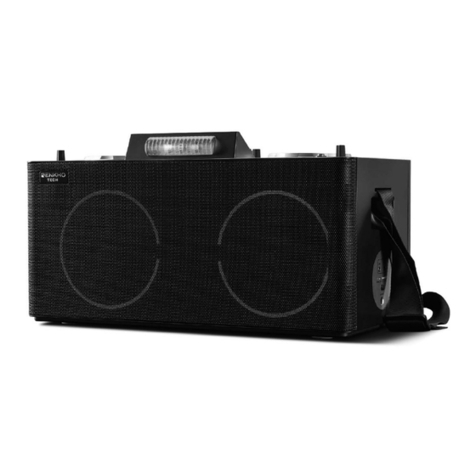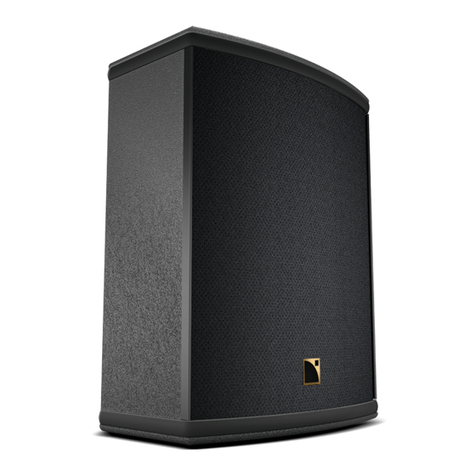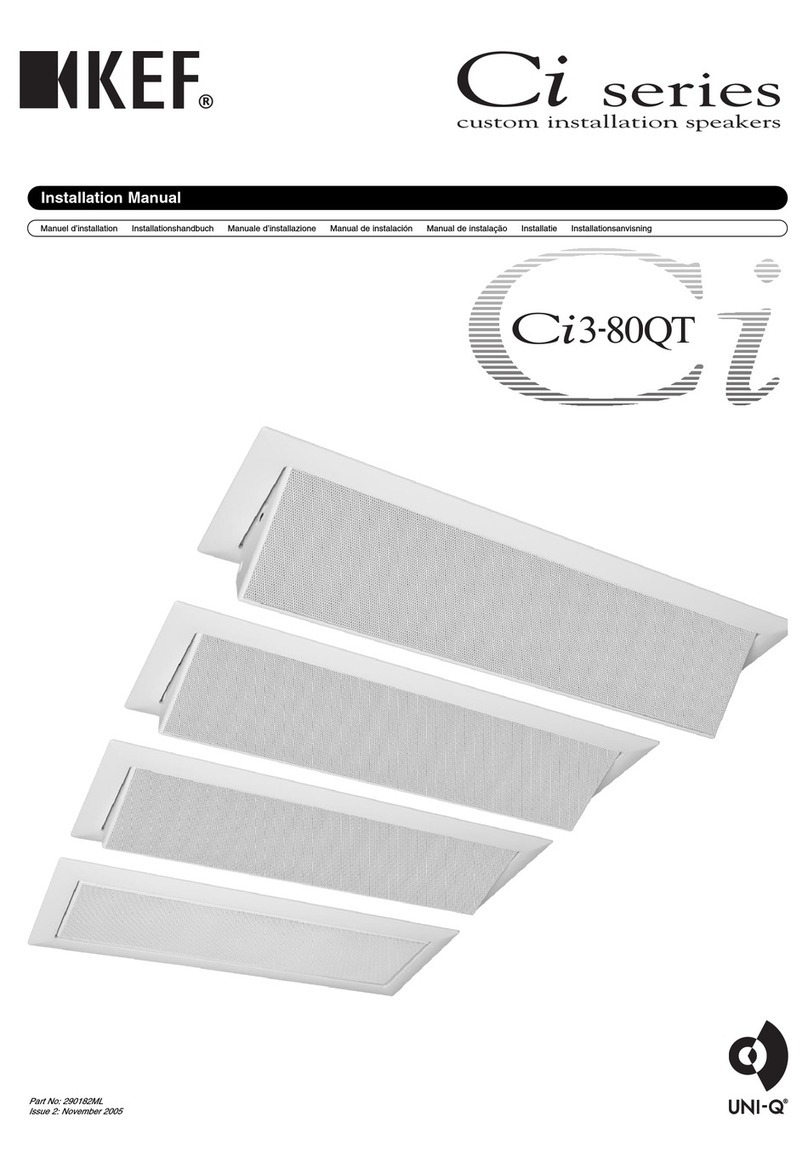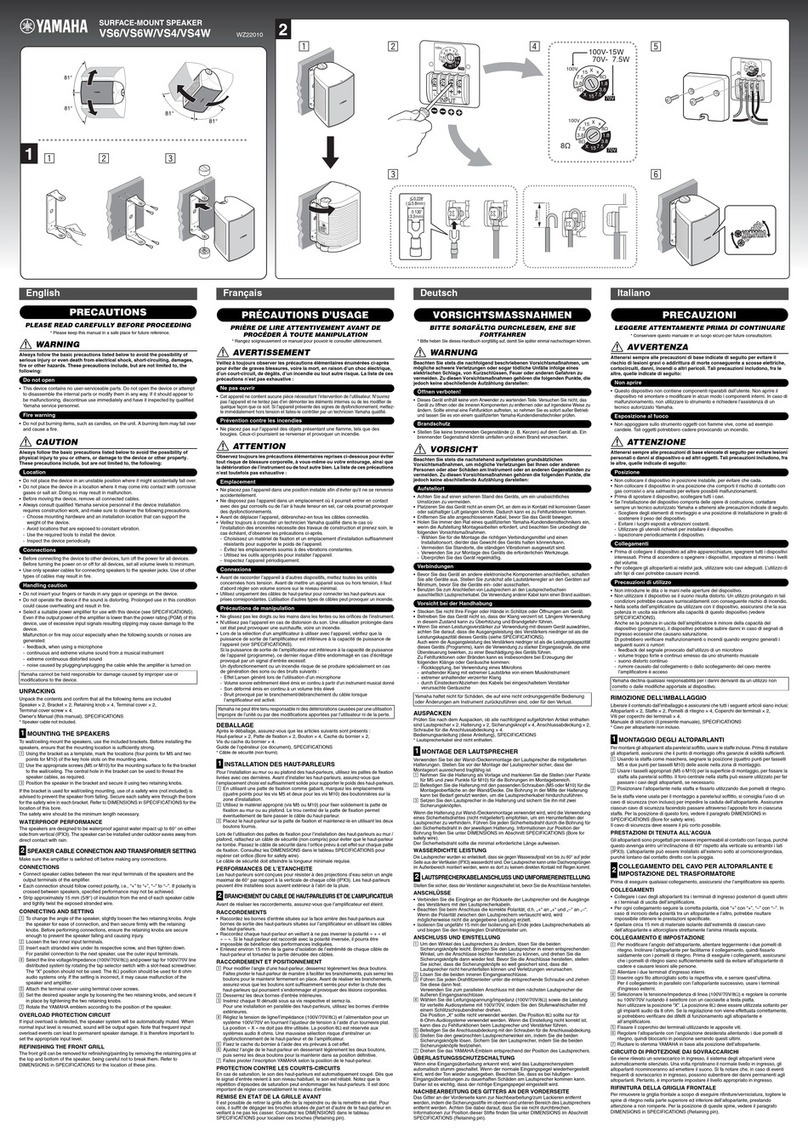Pfannenberg BExL25E User manual

Pfannenberg GmbH ·Werner Witt-Straße 1 ·D-21035 Hamburg ·Tel.: 040/7 34 12-0 · Telefax:040/ 734 12-345
technical.support@pfannenberg.com ·http://www.pfannenberg.com
PDG-Doc-No.: 11815-015-2b D 1 / 4 09/2009
Montageanleitung
BExL25E und BExL15E - ATEX
Explosionsgeschützte Lautsprecher
1) Einführung
Die Geräte BExL25E und BExL15E sind explosionsgeschützte
Lautsprecher der zweiten Generation, die nach den europäi-
schen Normen EN60079-0:2006, EN60079-1:2007 und
EN60079-7:2007 zugelassen wurden und die die Anforderun-
gen der ATEX-Richtlinie 94/9EG erfüllen. Die Lautsprecher
können in explosionsgefährdeten Bereichen eingesetzt wer-
den, in denen potentiell entzündliche Atmosphären vorhanden
sind. Es sind drei verschiedene Versionen erhältlich: 8 Ω, 16 Ω
oder 100 V-Technik. Bei 100 V-Ansteuerung sind 4 verschie-
dene Ausgangsleistungen abgreifbar. Der Lautsprecher
BExL25E erreicht einen Schallpegel von max. 117 dB(A), der
Lautsprecher BExL15E produziert max. 112 dB(A) Schallpe-
gel. Beide Lautsprecher können in Zone 1 und Zone 2 der
Gasgruppen IIA, IIB und IIC bei den Temperaturklassen T1,
T2, T3 oder T4 eingesetzt werden. Für Umgebungstemperatu-
ren von über +55°C sind die Gasgruppen auf IIA und IIB be-
schränkt.
2) K
ennzeichnung
Alle Geräte besitzen ein Typenschild, das folgende wichtige
Informationen beinhaltet:
Gerätebezeichnung: BExL25E oder BExL15E
Impedanz: 8 Ω, 16 Ωoder 100 V line
Kodierung: II 2G Ex de IIC T4 (Ta –50°C bis +55°C)
II 2G Ex de IIB T4 (Ta –50°C bis +70°C)
Zertifizierungsnr.
KEMA 99ATEX7906
Epsilon Kappa:
Gas-Gruppe und II 2G
Gerätekategorie:
CE-Zeichen:
Anerkannte
Zulassungsstellen-Nr. 0344
Warnung: Nicht öffnen, wenn explosionsfähige
Gasatmosphären vorhanden sind.
Deckelschrauben Klasse A4-80
Nur hitzebeständige Kabel und Kabelver-
schraubungen (zugelassen bis +110°C) bei
Umgebungstemperaturen über 40°C ver-
wenden.
Herstelljahr/
Serien-Nr.: z.B. 09/3L31000001
3)
Baumusterprüfungen
Die Lautsprecher sind nach EG-Richtlinien baumustergeprüft
und von der anerkannten Prüfstelle KEMA nach folgenden
Normen abgenommen:
EN60079-0:2006 Grundlegende Anforderungen
EN60079-1:2007 Druckfeste Kapselung “d”
EN60079-7:2007 Erhöhte Sicherheit “e”
4)
Anforderungen bei der Installation
Die Lautsprecher müssen in Übereinstimmung mit den letzten
Ausgaben der zutreffenden Teile der DIN EN 60079 oder den
gleichlautenden IEC-Normen – Auswahl, Anschluss und War-
tung von elektrischen Geräten zum Gebrauch in potentiell exp-
losiven Atmosphären (außer im Bergbau oder bei explosions-
gefährdeten Verfahren/ Fertigungen) – angeschlossen werden.
DIN EN 60079-14 : 2008
Elektrische Installationen in explosionsge-
fährdeten Bereichen(außer im Bergbau)
DIN EN 60079-10 : 2003
Klassifizierung gefährdeter Bereiche
Der Anschluss muss ebenfalls in Übereinstimmung mit jeder
lokalen Vorschrift, die anwendbar ist, von zugelassenen elekt-
rischen Fachkräften vorgenommen werden, die die notwendige
Ausbildung haben.
5)
Zonen, Gasgruppen, Kategorien und Tempera-
turklassen
Die Lautsprecher BExL25E und BExL15E sind mit der Einstu-
fung Ex de IIC T4 (Ta –50° C bis + 55°C) und Ex de IIB T4
(Ta –50° C bis + 70°C). zugelassen. Sie können an Orten fol-
gender Spezifikation eingesetzt werden:
Zonen-Zulassung:
Zone 1 Auftreten von explosionsfähigem Gas/Luft-
Gemisch im Normalbetrieb möglich.
Zone 2 Explosionsfähiges Gas/Luft-Gemisch:
Normalerweise nicht auftretend,
falls doch auftretend, dann nur kurzzeitig.
Gas-Gruppen:
Gruppe IIA Propan
Gruppe IIB Äthylen
Gruppe IIC (nur bis 55°C) Wasserstoff und Acetylen
Gerätekategorie: 2G
Temperaturklasse:
T1 400
o
C
T2 300
o
C
T3 200
o
C
T4 135
o
C
Umgebungstemperaturbereich:
-50°C bis +55°C für Gasgruppen IIA, IIB und IIC
-50°C bis +70°C für Gasgruppen IIA und IIB

Pfannenberg GmbH ·Werner Witt-Straße 1 ·D-21035 Hamburg ·Tel.: 040/7 34 12-0 · Telefax:040/ 734 12-345
technical.support@pfannenberg.com ·http://www.pfannenberg.com
PDG-Doc-No.: 11815-015-2b D 2 / 4 09/2009
6)
Anordnung und Montage
Die Anordnung der Lautsprecher sollte in Abhängigkeit von
dem Raum, in dem die Signale gehört werden sollen, vorge-
nommen werden. Lautsprecher sollen nur an Stellen installiert
werden, die das Gewicht der Lautsprecher tragen können.
Die Lautsprecher sollen sicher auf einer geeigneten Oberflä-
che befestigt werden. Hierfür sind die Schraublöcher mit ei-
nem Durchmesser von 7 mm in dem U-förmigen Befesti-
gungsbügel aus rostfreiem Stahl zu verwenden (siehe Bild 1).
Der Winkel kann danach eingestellt werden und hängt von der
Richtung ab, in der der Schall überwiegend abgestrahlt werden
soll. Durch Lösen der beiden Bügel-Befestigungsschrauben
kann der Einstellwinkel in 18°-Schritten verändert werden.
Nach Abschluss der Installation müssen beide Bügel-
Befestigungsschrauben fest angezogen sein, damit ausge-
schlossen ist, dass sich die Schallgeber bei Betrieb bewegen
können.
7)
Sicherheitshinweis (Elektrostatische Gefahr)
Der Schalltrichter ist aus ABS-Kunststoff gefertigt. Um elektro-
statische Aufladung zu verhindern, darf das Gerät nur mit ei-
nem feuchten Tuch gereinigt werden.
8)
Zugang zum druckfesten Gehäuse
Für den Anschluss der Versorgungsleitungen ist es nicht not-
wendig, das druckfeste Gehäuse zu öffnen, da diese im Ex-e-
Anschlussraum angeschlossen werden.
Nur für die Installation einer Leitungsüberwachung (siehe Kapi-
tel 15 dieser Anleitung) benötigen Sie den Zugang zum druck-
festen Gehäuse. Dafür entfernen Sie die vier M6-
Sechskantschrauben (siehe Bild 2). Der Ex-e-Anschlussraum
ist vorsichtig abzuheben, damit während des Vorgangs der
Flammspalt nicht beschädigt wird.
Beachten Sie, dass die vier M6 Schrauben zur Klasse A4-
80 (Edelstahl) gehören und nur diese Schrauben zur De-
ckelbefestigung zugelassen sind. Daher ist es sehr wichtig,
die Schrauben und Federscheiben an einem sicheren Ort wäh-
rend der Installation aufzubewahren.
Nach Beendigung der Installation einer Leitungsüberwachung
muss der Flammspalt untersucht werden, damit Verschmut-
zungen oder Beschädigungen ausgeschlossen werden kön-
nen. Ebenfalls muss der Potentialausgleich (Erdleiter) zwi-
schen beiden Aluminium-Druckgussteilen auf festen Sitz un-
tersucht werden, der O-Ring muss an der vorgesehenen Stelle
montiert sein. Beim Einbau des Ex-e-Anschlussraumes ist
darauf zu achten, dass er mit dem Gehäuse fluchtet. Das
Gussteil vorsichtig aufsetzen, dabei beachten, dass die einge-
schlossene Luft entweichen kann. Nachdem das Gussteil voll-
ständig montiert ist, werden die Edelstahlschrauben mit den
Federscheiben montiert.
Wenn der Ex-e-Anschlussraum bei der Montage klemmt, muss
er vorsichtig entfernt werden. Anschließend erneut versuchen,
das Gussteil zu montieren. Verwenden Sie niemals die
Schrauben, um das Gussteil gewaltsam einzusetzen.
9)
Zugang zum Ex-e Anschlussraum
Um die Versorgungsleitungen am Lautsprecher anzuschlie-
ßen, ist es notwendig, den Deckel des Ex-e-
Ansschlussraumes zu demontieren. Hierzu sind die vier M4
Sechskantschrauben zu entfernen (siehe Bild 2). Die vier M4
Schrauben sowie die Federscheiben sind A4 Edelstahlkompo-
nenten und sollten während der Installation an einem sicheren
Ort aufbewahrt werden.
Bevor der Deckel wieder auf den Ex-e-Anschlussraum aufge-
setzt wird, ist sicherzustellen, dass der Erdungsanschluss zwi-
schen den beiden Druckgussteilen einwandfrei hergestellt und
der O-Ring an der vorgesehenen Stelle montiert ist. Erst da-
nach Deckel vorsichtig aufsetzen und mit den M4 Schrauben
und Federscheiben befestigen.
1 2 3 4 5 6 7 8 9 10 11 12
10)
Leistungsverstärker
Es ist bedeutsam, dass die Lautsprecher an Leistungsverstär-
ker angeschlossen werden, deren Ausgangsleistung an die
Bild 1
Edelstahl-
Befestigungs-
bügel
Bild 2
Verschlussschrauben f.
druckfestes Gehäuse
4x M6 Deckel-Schrauben
Deckelschraube
für Ex-e-
Anschlussraum
4xM4
Druckfestes
Gehäuse
Deckel
Ex-e
Anschlussraum
Interner
Erdungsanschluss
Interne Potential-
ausgleichsleitung
2 M20 Kabel-
einführungen
Bild 3
Erdungsklemme
außen
Kunststoff-Schalltrichter
Beachten Sie den Si-
cherheits-Hinweis in
Kapitel 7 dieser Anlei-
tung

Pfannenberg GmbH ·Werner Witt-Straße 1 ·D-21035 Hamburg ·Tel.: 040/7 34 12-0 · Telefax:040/ 734 12-345
technical.support@pfannenberg.com ·http://www.pfannenberg.com
PDG-Doc-No.: 11815-015-2b D 3 / 4 09/2009
Lautsprecherleistung angepasst ist. Lautsprecher mit 100 V-
Transformatoren müssen an Leistungsverstärker mit 100 V-
Ausgang angeschlossen werden. Lautsprecher mit niedriger
Impedanz (8 Ωoder 16 Ω) müssen an entsprechende Verstär-
kerausgänge angeschlossen werden
Nachfolgende Tabelle zeigt den Einsatzbereich der Lautspre-
cher:
Gerätetyp Eingang Leistung Max. Eing.-
spannung
BExL25E 100 V line 25 W 100V
BExL25E 8 Ω25 W 14.14V
BExL25E 16 Ω25 W 20V
BExL15E 100 V line 15 W 100V
BExL15E 8 Ω15 W 10.95V
BExL15E 16 Ω15 W 15.49V
Die o.a. Tabelle zeigt ebenfalls die maximale AC-Spannungs-
belastung für den Betrieb der Lautsprecher an.
Die Stromaufnahmen hängen u.a. von der gewählten Vorein-
stellung ab (siehe Kapitel 14 der Betriebsanleitung). Die Laut-
sprecher BExL25E mit 100V-Line-Eingang haben Ausgangs-
leistungen von 25 W, 12.5 W, 6 W oder 2 W, die Lautsprecher
BExL15E mit 100 V-Line-Eingang können mit Ausgangsleis-
tungen von 15 W, 7.5 W, 3 W oder 1 W betrieben werden.
11)
Kabelauswahl
Bei der Auswahl der Anschlusskabel sind Stromaufnahmen
der Lautsprecher, Anzahl der Lautsprecher und Gesamtkabel-
länge zu berücksichtigen.
S
ICHERHEITSHINWEIS
:
Wenn die Schallgeber bei hohen Umgebungstemperaturen
(ab +40°C) eingesetzt werden, können an den Kabelver-
schraubungen Temperaturen von über +70°C auftreten. Daher
müssen geeignete temperaturbeständige Kabel mit einer Be-
ständigkeit bis +110°C verwendet werden.
12)
Erdung
Alle Lautsprecher müssen gut geerdet werden. Dazu sind die
Geräte mit internem und externem Potentialausgleich verse-
hen, die am Ex-e-Anschlussraum zu finden sind (siehe Bild 2
und 3).
Bei Gebrauch des externen Erdungsanschlusses sind
Quetschkabelschuhe zu verwenden. Der Kabelschuh ist zwi-
schen den beiden M5 Flachscheiben anzubringen. Die Edel-
stahlfederscheibe muss zwischen äußerer Flachscheibe und
Sechskantmutter liegen, um sicherzustellen, dass die Verbin-
dung gegen Lösen und Verdrehen geschützt ist. Der interne
Erdanschlussleiter gewährleistet einen guten Potentialaus-
gleich zwischen dem druckfestem Gehäuse, Ex-e-
Anschlussraum und dem Deckel.
13)
Kabelverschraubungen
Die Lautsprecher BExL25E und BExL15E haben zwei Kabel-
einführungen M20 x 1.5 (Standard) oder PG 13.5 (Sonderaus-
führung). Es dürfen nur Kabelverschraubungen mit einer Zu-
lassung für Ex-“e”-Anwendungen oder höher (z.B. Ex-"d"-
Anwendungen) verwendet werden, die für das gewählte An-
schlusskabel geeignet sind und die Anforderungen der
DIN EN 60079-14: 2008 erfüllen.
S
ICHERHEITSHINWEIS
:
Wenn die Schallgeber bei hohen Umgebungstemperaturen
(ab +40°C) eingesetzt werden, können an den Kabelver-
schraubungen Temperaturen von über +70°C auftreten. Daher
müssen geeignete temperaturbeständige Kabel mit einer Be-
ständigkeit bis +110°C verwendet werden.
Wenn eine hohe IP-Schutzart gefordert ist, muss eine geeigne-
te Dichtung mit der Kabelverschraubung verwendet werden.
Wird nur eine Kabelverschraubung eingesetzt, muss die ande-
re Öffnung mit einem geeigneten Ex ”e”-Blindstopfen ver-
schlossen werden.
14)
Kabelverbindungen
Der Kabelanschluss erfolgt an einem 12poligen Ex e II zuge-
lassenem Schraubklemmenblock (6-polig bei Niedrig-
Impedanz-Geräten) im Ex-e-Anschlussraum. (s. Bild 3) Beach-
ten Sie Kapitel 9 dieser Anleitung für den Zugang zum Ex-e-
Anschlussraum. In Anschlussräumen mit erhöhter Sicherheit
ist nur eine Kabelverbindung je Schraubklemme erlaubt. Um
auch den Parallelbetrieb von Lautsprechern zu ermöglichen,
sind die Klemmenblöcke mit zugelassenen Brücken ausgestat-
tet, so dass jeder Anschluss über zwei parallele Klemmen ver-
fügt. Die Klemmen 1 und 12 (bzw. 1 und 6 bei Niedrig-
Impedanz-Geräten) dürfen nicht benutzt werden. Es können
Kabelquerschnitte bis 4mm² pro Einzelklemme angeschlossen
werden. Kabel mit kleinerem Querschnitt sollten mit geeigne-
ten Aderendhülsen versehen sein.
Niedrig-Impedanz-Lautsprecher sind mit zwei Doppelklemmen
2-3 und 4-5 ausgestattet. Die 100 V-Lautsprecher verfügen
über fünf Doppelklemmen. Klemme 10-11 ist der gemeinsame
Leiter, einer der anderen vier Paare 8-9, 6-7, 4-5, oder 2-3
muss in Abhängigkeit von der gewünschten Ausgangsleistung
gewählt werden (siehe nachfolgende Tabelle).
Klemmen BExL25E BExL15E
(100V) (100V)
10-11 u. 8-9 25 W 15 W
10-11 u. 6-7 12,5 W 7,5 W
10-11 u. 4-5 6 W 3 W
10-11 u. 2-3 2 W 1 W
15)
Leitungsüberwachung
Bei BExL25D und BExL15D Lautsprechern kann bei Bedarf
eine DC-Leitungsüberwachung eingesetzt werden. Sowohl
100 V Einheiten als auch Niedrig-Impedanz-Geräte haben
einen Abschlusskondensator. Es ist anzumerken, dass jeder
Lautsprecher einen 1 MΩNebenwiderstand parallel zum Kon-
densator besitzt. Dies ist bei der Berechnung des Wertes für
den Abschlusswiderstand am Ende des Kabels zu berücksich-
tigen.
Der Abschlusswiderstand kann im letzten Lautsprecher einer
Linie angeschlossen werden. Beachten Sie, dass der Ab-
schlusswiderstand an die Klemmen im druckfesten Ge-
häuse angeschlossen werden muss. Er darf nicht an die
Klemmen im Ex-e-Anschlussraum angeschlossen werden.

Pfannenberg GmbH ·Werner Witt-Straße 1 ·D-21035 Hamburg ·Tel.: 040/7 34 12-0 · Telefax:040/ 734 12-345
technical.support@pfannenberg.com ·http://www.pfannenberg.com
PDG-Doc-No.: 11815-015-2b D 4 / 4 09/2009
BExL25E und BExL15E 8
Ω
und 16
Ω
Lautsprecher
Druckfestes Gehäuse
Beachten Sie Kapitel 8 dieser Anleitung für den Zugang
zum druckfesten Gehäuse.
Bilder 4 und 5 zeigen die Anschlussklemmen im druckfesten
Gehäuse für die 100V-line-Ausführung bzw. die Niedrig-
Impedanz-Lautsprecher. Bei letztgenannten Lautsprechern
muss die Polarität der Überwachungsspannung beachtet wer-
den.
Bei den 100 V Einheiten muss der Abschlusswiderstand min-
destens 4,7 k Ωbei 2,5 W haben.
Der Anschluss des Abschlusswiderstands an der Klemme
hängt von der gewählten Ausgangsleistung ab und ist der
nachfolgenden Tabelle zu entnehmen.
BExL25E (25W) BExL15E (15W)
Klemmen 100V Line 100V Line
A - B 25 W 15 W
A - C 12.5 W 7.5 W
A - D 6 W 3 W
A - E 2 W 1 W
A
B
C
D
E
Bei Niedrig-Impedanz-Lautsprechern müssen die Werte für
den Abschlusswiderstand entweder mindestens 2 k Ω(bei
0,5 W) oder mindestens 500 Ω(bei 2 W) haben.
Bei Niedrig-Impedanz-Einheiten ist die Polarität der Überwa-
chungsspannung zu beachten. Wenn ein Abschlusswiderstand
an einem Lautsprecher montiert ist, müssen alle Verbindungen
auf den Leiterplatten der in dieser Linie installierten Lautspre-
cher unterbrochen werden (siehe Bild 5).
BExL25E und BExL15E 100V Line Lautsprecher
Druckfestes Gehäuse
Bild 4
Verbindung
Bild 5

Pfannenberg GmbH ·Werner Witt-Straße 1 ·D-21035 Hamburg ·Tel.: 040/7 34 12-0 · Telefax:040/ 734 12-345
technical.support@pfannenberg.com ·http://www.pfannenberg.com
PDG-Doc-No.: 11815-015-2b E 1 / 4 09/2009
INSTRUCTION MANUAL
(ATEX)
BExL25E and BExL15E
Flameproo / Increased Sa ety Loudspeakers
1) Introduction
The BExL25E and BExL15E are second generation flameproof
/increased safety loudspeakers which are certified to the
European Standards EN60079-0:2006, EN60079-1:2007 and
EN60079-7:2007 and meet the requirements of the ATEX
directive 94/9/EC. The loudspeakers can be used in hazardous
areas where potentially flammable atmospheres may be
present. There are three versions of each loudspeaker, 8 ohm
or 16 ohm or 100V Line transformer. On 100V line transformer
units there are four output tappings for each size of
loudspeaker. The BExL25E unit produces output levels in the
117dB(A) range and the BExL15E unit produces output levels
in the 112dB(A) range. Both loudspeakers can be used in
Zone 1 and Zone 2 areas with gases in groups IIA, IIB and IIC
and temperature Classifications of T1, T2, T3 and T4. For
ambient temperatures over +55ºC the gas groups are limited to
IIA and IIB.
2)
Marking
All units have a rating label, which carries the following
important information: -
Unit Type No.
BExL25E or BExL15E
Impedance: 8 ohm or 16 ohm
100V Line
Codes:
II 2G Ex de IIC T4 for T
a
–50°C to +55
°
C
II 2G Ex de IIB T4 for T
a
–50°C to +70
°
C
Certificate No.
KEMA 99ATEX7906
“Warnings”
DO NOT OPEN WHEN AN EXPLOSIVE
GAS ATMOSPHERE IS PRESENT
COVER BOLTS CLASS A4-80
USE HEAT RESISTING CABLES AND CABLE GLANDS
(Rated 110ºC) AT AMB. TEMPERATURES OVER 40ºC
Year of Construction /
Serial No. i.e. 09 / 3L43000001
3)
Type Approval Standards
The loudspeakers have an EC Type examination certificate
issued by KEMA and have been approved to the following
standards: -
EN60079-0:2006 General Requirements
EN60079-1:2007 Flameproof Enclosure ‘d’
EN60079-7:2007 Increased Safety ‘e’
4)
Installation Requirements
The loudspeakers must be installed in accordance with the
latest issues of the relevant parts of the EN60079 standards or
the equivalent IEC standards – Selection, Installation and
maintenance of electrical apparatus for use in potentially
explosive atmospheres (other than mining applications or
explosive processing and manufacture):-
EN60079-14:2008
Electrical Installations in Hazardous
Areas (other than mines)
EN60079-10:2003
Classification of Hazardous Areas
The installation of the units must also be in accordance with
any local codes that may apply and should only be carried out
by a competent electrical engineer who has the necessary
training.
5)
Zones, Gas Group, Category and Temperature
Classification
The BExL25E and BExL15E loudspeakers have been certified
Ex de IIC T4 for Ta –50°C to +55ºC and Ex de IIB T4 for Ta
–50°C to +70ºC. This means that the units can be installed in
locations with the following conditions:-
Area Classification:
Zone 1 Explosive gas air mixture likely to occur in
normal operation.
Zone 2 Explosive gas air mixture not likely to occur,
and if it does, it will only exist for a short time.
Gas Groupings:
Group IIA Propane
Group IIB Ethylene
Group IIC (Up to +55ºC only) Hydrogen and Acetylene
Equipment Category: 2G
Temperature Classification:
T1 400
o
C
T2 300
o
C
T3 200
o
C
T4 135
o
C
Ambient Temperature Range:
-50°C to +55°C Gas Groups IIA, IIB and IIC
-50°C to +70°C Gas Group IIA and IIB
0344
II 2G
Epsilon x:
Equipment Group
and Category:
CE Marking:
Notified Body No.

Pfannenberg GmbH ·Werner Witt-Straße 1 ·D-21035 Hamburg ·Tel.: 040/7 34 12-0 · Telefax:040/ 734 12-345
technical.support@pfannenberg.com ·http://www.pfannenberg.com
PDG-Doc-No.: 11815-015-2b E 2 / 4 09/2009
6)
Loudspeaker Location and Mounting
The location of the loudspeakers should be made with due
regard to the area over which the unit must be audible. The
loudspeakers should only be fixed to services that can carry
the weight of the unit.
The loudspeakers should be securely bolted to a suitable
surface using the 7mm diameter boltholes in the stainless steel
U shaped mounting bracket (see figure 1). The angle can then
be adjusted in the direction that the sound is primarily required
to cover. This can be achieved by loosening the two large
bracket screws in the side of the unit, which allow adjustment
in steps of 18°. On completion of the installation the two large
bracket adjustment screws on the side of the unit must be fully
tightened to ensure that the loudspeaker cannot move in
service.
7)
Safety Warning (Electrostatic Hazard)
The acoustic horn section is made of ABS Plastic, therefore to
avoid a possible ELECTROSTACTIC CHARGE the unit must
only be cleaned with a damp cloth.
8)
Access to the Flameproof Enclosure
Access to the flameproof enclosure will not normally be
necessary as the cables enter the unit in the Ex ‘e’ Increased
Safety Termination enclosure. Access will only be required if
you need to fit an end on line monitoring component (see
section 15 of this manual). To gain access to the flameproof
enclosure, remove the four M6 hexagon socket head screws
(see figure 2) and withdraw the terminal chamber taking
extreme care not to damage the flameproof joints in the
process.
Note the four M6 screws are Class A4-80 stainless steel
and only screws of this category can be used on these
sounders. It is therefore important that these screws and their
spring washers are kept in a safe place during installation.
On completion of the fitting of the monitoring component the
flameproof joints should be inspected to ensure that they are
clean and that they have not been damaged during installation.
Also check that the earth bonding wire between the two
casting sections is secure and that the ‘O’ ring seal is in place.
When replacing the terminal chamber section casting, ensure
that it is square with the flameproof chamber casting before
inserting. Carefully push the section in place allowing time for
the air to be expelled. Only after the section is fully in place
should the four M6 Stainless Steel A4-80 cover bolts and their
spring washers be inserted and tightened down. If the section
jams while it is being inserted, carefully remove it and try
again. Never use the M6 cover bolts to force the cover into
position.
9)
Access to the Increased Safety Terminal
Chamber
To connect the cables to the loudspeaker it is necessary to
remove the terminal cover to gain access to the termination
chamber. To achieve this remove the four M4 hexagon socket
head screws (see figure 2). The four M4 screws and their
spring washers are grade A4 stainless steel and they should
be kept in a safe place during installation. Before replacing the
terminal cover ensure that the earth bonding wire between the
two castings is secure and that the ‘O’ ring seal is in place.
Insert the four M4 hexagon screws and their spring washers
and tighten them down.
10)
Power Amplifier Selection
It is important that the loudspeakers are connected to power
amplifiers that have outputs that are compatible to the type of
loudspeaker being used. Loudspeakers with a 100V line
matching transformer fitted must be connected to a power
amplifier with a 100V line output. Low impedance 8 ohm or 16
Figure 1
Flameproof
Chamber
Terminal
Cover
S/S Mounting
Bracket
Figure 2
Flameproof Chamber
4 off M6 Cover Screws
External Earth
Terminal
Figure 3
Internal Bonding
Wire Terminal
Increased Safety
Chamber
4 off M4 Cover Screws
Terminal
Chamber
1 2 3 4 5 6 78 9 10 11 12
2 off M20
Cable Entries
Internal Earth Terminal
Plastic Acoustic Horn
Please see Safety Warning
in Section 7 of this manual

Pfannenberg GmbH ·Werner Witt-Straße 1 ·D-21035 Hamburg ·Tel.: 040/7 34 12-0 · Telefax:040/ 734 12-345
technical.support@pfannenberg.com ·http://www.pfannenberg.com
PDG-Doc-No.: 11815-015-2b E 3 / 4 09/2009
ohm loudspeakers must be connected to amplifiers with a
suitable low impedance output.
The following table shows the range of loudspeakers:-
Unit Type Input Wattage Max.
I/P Volts
BExL25E 100V Line 25W 100V
BExL25E 8 ohm 25W 14.14V
BExL25E 16 ohm 25W 20V
BExL15E 100V Line 15W 100V
BExL15E 8 ohm 15W 10.95V
BExL15E 16 ohm 15W 15.49V
The above table also shows the maximum AC signal voltages
at which the loudspeakers can be operated.
The current levels taken by the each loudspeaker will depend
on which output tapping has been selected (see section 14 of
this instruction manual). BExL25E 100V Line units have output
levels of 25W, 12.5W, 6W and 2W, BExL15E 100V Line units
have output levels of 15W, 7.5W, 3W and 1W.
11)
Cable Selection
When selecting the cable size consideration must be given to
the current that each unit draws, the number of loudspeakers
on the line and the length of the cable runs.
SAFETY WARNING: If the loudspeakers are used at high
ambient temperatures, i.e. over +40ºC, then the cable entry
temperature may exceed +70ºC and therefore suitable heat
resisting cables must be used, with a rated service
temperature of at least 110ºC.
12)
Earthing
All loudspeakers must be connected to a good quality earth.
The units are provided with internal and external earthing
terminals which are both located on the terminal chamber
section of the unit (see figures 2 and 3).
When using the internal earth terminal ensure that the
stainless steel M4 flat washer is between the incoming earth
wire and the enclosure.
When using the external earth terminal a cable crimp lug must
be used. The cable lug should be located between the two M5
stainless steel flat washers. The M5 stainless steel spring
washer must be fixed between the outer flat washer and the
M5 stainless steel nut to ensure that the cable lug is secured
against loosening and twisting.
The internal earth bonding wires ensure that a good quality
earth is maintained between the flameproof chamber casting,
the terminal section casting and the terminal cover casting.
13)
Cable Glands
The BExL25E and BExL15E loudspeakers have dual cable
gland entries which have an M20 x1.5 entry thread as standard
or a PG13.5 thread as a special. Only cable glands approved
for Ex ‘e’ applications or better (i.e. Ex ‘d’ applications) can be
used. They must be suitable for the type of cable to be used
and also meet the requirements of the Ex equipment
installation standard EN60079-14:2008.
SAFETY WARNING: If the loudspeakers are used at high
ambient temperatures, i.e. over +40ºC, then the cable entry
temperature may exceed +70ºC and therefore suitable heat
resisting cable glands must be used, with a rated service
temperature of at least 110ºC.
If a high IP (Ingress Protection) rating is required then a
suitable sealing washer must be fitted under the cable gland.
When only one cable entry is used the other one must be
closed with an Ex ‘e’ blanking plug, which must be suitably
approved for the installation requirements.
14)
Cable Connections
The cable connections are made into an Ex e II approved
twelve way terminal block (six way on low impedance units)
which is located in the Increased Safety Area terminal
chamber (see figure 3). See section 9 of this manual for
access to the terminal chamber. When wiring into Increased
Safety Area terminal enclosures, you are only permitted to
connect one wire into each way on the terminal block.
Therefore in order that loudspeakers can be connected in a
parallel line, the terminal block is fitted with approved
connecting combs so that each electrical connection has two
terminals in parallel. Terminal No’s. 1 and 12 (1 and 6 on low
impedance units) must not be used on any units. Cables with a
cross-sectional area of up to 4mm² can be connected to the
terminal block. Cables that have a small cross-sectional area
should be fitted with crimp ferules.
The low impedance loudspeakers are fitted with two pairs of
terminals 2-3 and 4-5.
The 100V Line loudspeakers are fitted with five pairs of
terminals. Terminals 10-11 which are the common and one of
the other four pairs of terminals 8-9, 6 -7, 4-5 or 2-3 should be
selected depending on what output level is required (see the
following table).
BExL25E (25W) BExL15E (15W)
Terminals 100V Line 100V Line
10-11 to 8-9 25W 15W
10-11 to 6-7 12.5W 7.5W
10-11 to 4-5 6W 3W
10-11 to 2-3 2W 1W
15)
End of Line DC Monitoring
On BExL25E and BExL15E loudspeakers, dc line monitoring
can be used if required. Both the 100V Line units and the Low
Impedance units have a blocking capacitor fitted. It should be
noted that each loudspeaker has a 1M ohm bleed resistor
connected across the blocking capacitor and this should be
taken into account when selecting the value of the end of line
monitoring resistance.

Pfannenberg GmbH ·Werner Witt-Straße 1 ·D-21035 Hamburg ·Tel.: 040/7 34 12-0 · Telefax:040/ 734 12-345
technical.support@pfannenberg.com ·http://www.pfannenberg.com
PDG-Doc-No.: 11815-015-2b E 4 / 4 09/2009
The end of line monitoring resistor can be connected to the
end of line unit. Note the monitoring resistor MUST be
connect to the terminals in the flameproof enclosure, it
MUST NOT be connect to the terminals in the Increased
Safety termination enclosure (see section 8 of this manual
for access to the flameproof enclosure). Figures 4 and 5
show the terminals in the flameproof enclosures for the 100V
Line and low impedance units respectively. On the low
impedance units care must be taken with the polarity of the
monitoring voltage.
On 100V line units the end of line resistor used must have a
minimum resistance value of 4k7 ohms and a minimum
wattage of 2.5 watts. The terminal numbers, across which the
resistor should be fitted, will depend on the output level
selected and are given in the following table:-
Terminals BExL25E (25W) BExL15E (15W)
A - B 25W 15W
A - C 12.5W 7.5W
A - D 6W 3W
A - E 2W 1W
A
B
C
D
E
On low impedance units the end of line resistor used must
have a minimum resistance value of 2k ohms and a minimum
wattage of 0.5 watts or a minimum resistance value of 500
ohms and a minimum wattage of 2 watts. On the low
impedance units care must be taken with the polarity of the
monitoring voltage. If an end of line resistor is fitted to a unit
the links on the printed circuit boards of all loudspeakers in the
line must be cut for the dc blocking capacitors to be in circuit in
order to dc monitor the line (see figure 5).
Figure 5
Figure 4
BExL25E and BExL15E 100V Line Loudspeakers
Flameproof Enclosure
BExL25E and BExL15E 8 ohm and 16 ohm Loudspeakers
Flameproof Enclosure
- - + +
Link
This manual suits for next models
1
Table of contents
Languages:
Other Pfannenberg Speakers manuals
